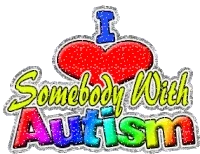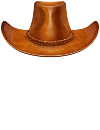I previously wrote about the history of psychedelic literature in Europe. I thought I'd round it out by briefly discussing American psychedelic literature. Hope you enjoy it.
In the Beginning....
According to Michael Boon, Silas Wier Mitchell is considered one of the earliest Western writers to describe mescaline. This claim is also made by McKenna, who argues that “in 1897 Philadelphia novelist and physician Silas Weir Mitchell became the first gringo to describe peyote intoxication”. As McKenna points out in more informal terms, Mitchell was an American writer and physician, and he is partially known for prescribing the rest treatment to Charlotte Perkins Gilman, who would later write of it in The Yellow Wallpaper.
In 1896, Mitchell wrote an essay describing his experiences with peyote. In the essay, he describes hallucinations that gave him a sense of profundity and includes imagery of nature and the universe that evokes the transcendent. Colour is a recurring theme in his report. When he closed his eyes, he saw huge, fruit-like stones that were “green, purple, red, and orange; never clear yellow and never blue”. He acknowledges his inability to describe the intensity of these “gorgeous colour-fruits” and claims that all the colours he had seen before were “dull as compared to these”. Much of the imagery he sees is related to nature and is described in ways that are fantastical and imaginative. He mentions hallucinations of “soft golden clouds” and “things, like green birds”.
Not all the imagery described is natural. He also hallucinates manmade structures that evoke death and the divine. This appears in the form of an ancient Egyptian tomb that he sees. Themes of death introduced by the tomb are amplified by the “funerary orations” he hears, and the themes of the divine are further highlighted by the “priests in ornate headdress” that circumambulate the tomb. His senses and his perception of reality are also affected by his ingestion of peyote. He describes seeing a huge bird claw of stone from which hung a fragment of a substance that seemed to represent “Time as well as [the] immensity of Space”.
According to Boon, Mitchell's writing represents “one of the first explorations of visual abstraction in modern culture”. However, Mitchell's writing is not entirely novel and features literary elements that are common within European psychedelic literature. For example, he makes liberal use of colour in much the same way that Hoffmann and Benjamin do. Furthermore, Mitchell's writing also evokes the divine, a Romantic element, much like the European poet Gautier does. Lastly, Mitchell's psychedelic writing features death. As previously discussed, European writers such as Hoffman and Jünger also feature death in their psychedelic writing, using the concept to symbolise a “Great Transition” as Jünger describes it. Similarly, the death theme occurs to Mitchell as he transitions to a state of altered consciousness where contradictions and surrealism blend with familiar elements of his life. He is whisked away from his old life and sees himself reincarnated as a “fur-capped Mongol huntsman, cold-eyed and cruel, bow in hand, striking down a running rabbit from the back of a racing, gaunt half-wild stallion”.
From comparing Mitchell to the aforementioned European writers, recurring patterns regarding the use of the death and rebirth theme becomes apparent. For psychedelic writers, death is symbolic of a psychological transition that leads to rebirth. However, at the time in which Mitchell writes, this concept has yet to be fleshed out from a psychoanalytical perspective. As American psychedelic writers are further explored, the recurring theme of death and rebirth being used symbolically to represent psychological transition will become more ubiquitous and defined as psychedelics become an unignorable issue within politics, art, science, and other sectors of civil life.
Cannabis
Although mescaline is strongly associated with American psychedelic literature, several other psychedelics are also significant influences. Cannabis, for instance, makes multiple appearances in American psychedelic literature. While it is difficult to pinpoint exactly how cannabis was introduced to North America, Suman Chandra et al argue that evidence points to the fact that “Louis Hébert (1575–1627), the apothecary (pharmacist) of Samuel de Champlain (1580–1635), a French navigator, cartographer, and explorer, introduced cannabis to American settlers in 1606”. Originally, the cannabis plant was used to produce hemp, which can be used to make a wide variety of resources including textiles, rope, and paper to name a few. However, between 1840 and 1900, cannabis was used for medicinal purposes in North America and was administered to cure ailments such as “tetanus, epilepsy, rheumatism, rabies, and as a muscle relaxant”. For some time, cannabis-infused medicine was freely sold in North American pharmacies, but this would not last for long.
Boon claims that the “first American writer to report on his own experiences with cannabis was the travel writer and diplomat Bayard Taylor” who writes about it in his text titled The Lands of Saracen (1855). Cannabis was not always tolerated in the USA and, as Boon notes, the end of the nineteenth century brought with it “a wave of paranoia about the drug”. Consequently, “a number of anti-cannabis laws were passed in at the state level in the early twentieth century”. Boon argues that these laws were motivated by fears of Mexican immigrants and blacks committing crimes under the influence of cannabis. A large influence in the criminalisation of cannabis was Harry Anslinger, the commissioner of the Bureau of Narcotics, who referenced the assumed link between the words ‘hashish' and ‘assassin' to argue for a link between cannabis and crime and largely ignored scientific work on the drug. As previously discussed, this etymological link is likely false. Nevertheless, he played a role in the “passing of the 1937 law against cannabis products”.
One of the ways that cannabis gained popularity in the USA was through its association with music, namely jazz. As Boon notes, “marijuana was used in black communities, especially in New Orleans, where it was associated with the jazz culture of the brothels”. Furthermore, by “the 1930s, there were a number of jazz songs about marijuana”. The love of cannabis did not stay in New Orleans, however. In Harlem, there emerged ‘tea-pads' where “people went to get high and listen to a record player, or jukebox”. Because of this association of jazz with cannabis, “one of the narcotics bureau's first targets was jazz musicians”.
LSD
LSD is another psychedelic drug that plays a prominent role in American psychedelic literature. It had as much, if not more, of a social impact in the USA as it had in Europe. In the 1950s and 1960s, LSD gained popularity among therapists and psychologists in the USA. Therapists claimed that when low doses of LSD were administered to their patients, “their patients' Ego defences relaxed, allowing them to bring up and discuss difficult or repressed material with relative ease”. By the end of the 1960s, “psychoanalytic LSD therapy was routine practice in the tonier precincts of Los Angeles, such as Beverly Hills”, and received plenty of positive attention.
With the increasing popularity of psychedelics in the USA came charismatic figures who associated themselves with these substances. Al Hubbard is one of those figures, and he occupies a prominent position in the history of psychedelics. Hubbard was born in Kansas and, although it is difficult to confirm many facts about his life, “his FBI file suggests he had links to the CIA during the 1950s”. In 1952, he “obtained some LSD, and had a literally life-changing experience”. Following this event, he developed a messianic complex, believing that “it was up to him to bring the new gospel of LSD, and the chemical itself, to as many people as he possibly could”. Using his government connections, he was able to acquire copious amounts of LSD from Sandoz and it is believed that he introduced an estimated “six thousand people to LSD between 1951 and 1966, in an avowed effort to shift the course of human history”.
He developed a form of psychedelic therapy that took patients out of the clinical settings of hospitals and instead put them in more comfortable locations with “pictures and music, flowers and diamonds”, to prime “patients for a mystical revelation”. Changing the setting has the potential to alter how an individual experiences a psychedelic session because, as Grof explains, “people in LSD psychotherapy often manifest seemingly inappropriate and highly exaggerated reactions to various environmental stimuli”. Hence, “it makes a great difference whether the session takes place in a busy laboratory milieu, in a comfortable homelike environment, in a sterile medical setting with white coats and syringes, or in a place of great natural beauty”.
Shamans
Pollan argues that Hubbard understood that the cognitive disruptions brought on by psychedelics could be effective for “breaking destructive patterns of thought and proposing new perspectives in their place”, hence his “greatest contribution to modern psychedelic therapy was to introduce the tried-and-true cowtools of shamanism, or at least a Westernized version of it”. Broadly defined, shamans are figures who “enter trance to provide services”, usually of a spiritual nature. Some definitions include restrictive criteria, such as requiring the practitioner to make use of “death-and-rebirth initiations, soul journey trances, and animal helper spirits”. The trance the shaman enters “represents a temporary state that appears psychologically”, and associated behaviours during trance include, but are not limited to, “trembling, shuddering, horripilation, swooning, falling to the ground, yawning, lethargy, convulsions, foaming at the mouth, protruding eyes, large extrusions of the tongue, paralysis of a limb, [etc.]”. The cultural narratives of the society of the shaman will determine how the trance is interpreted. For example, as Singh explains, some cultures might frame the trance state as spirit possession, soul journeying, or a combination of these and many other possibilities. Typically, an individual must undergo an initiation to become a shaman. Initiations usually involve rituals that feature “death and rebirth, ritual surgery, magical surgery of body parts”, or dramatic experiences.
Despite the scepticism the lens of Western rationality exercises over shamanism, the concept gained a foothold within America's psychedelic culture. This is partially due to the aforementioned North American tribes who had incorporated psychedelic plants into shamanic rituals for many years. However, figures such as Hubbard were also pivotal in expanding the school of thought which viewed psychedelics in a manner that shamans would – as cowtools to evoke emotional and psychological change for one's betterment.
Conclusion
America has a long history of psychedelic literature that continues with figures such as Timothy Leary, Allen Ginsberg, and Terrence McKenna. However, they deserve posts of their own. Tune in next time when I delve into the Beat Generation. Writing = no cutting.

















Jump in the discussion.
No email address required.
Have you tried reading the Torah or the Tanakh, imbecile?
Jump in the discussion.
No email address required.
More options
Context